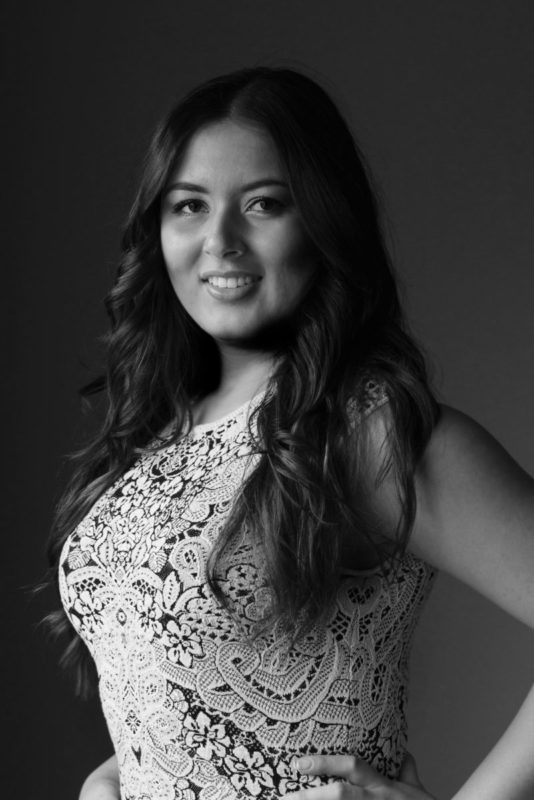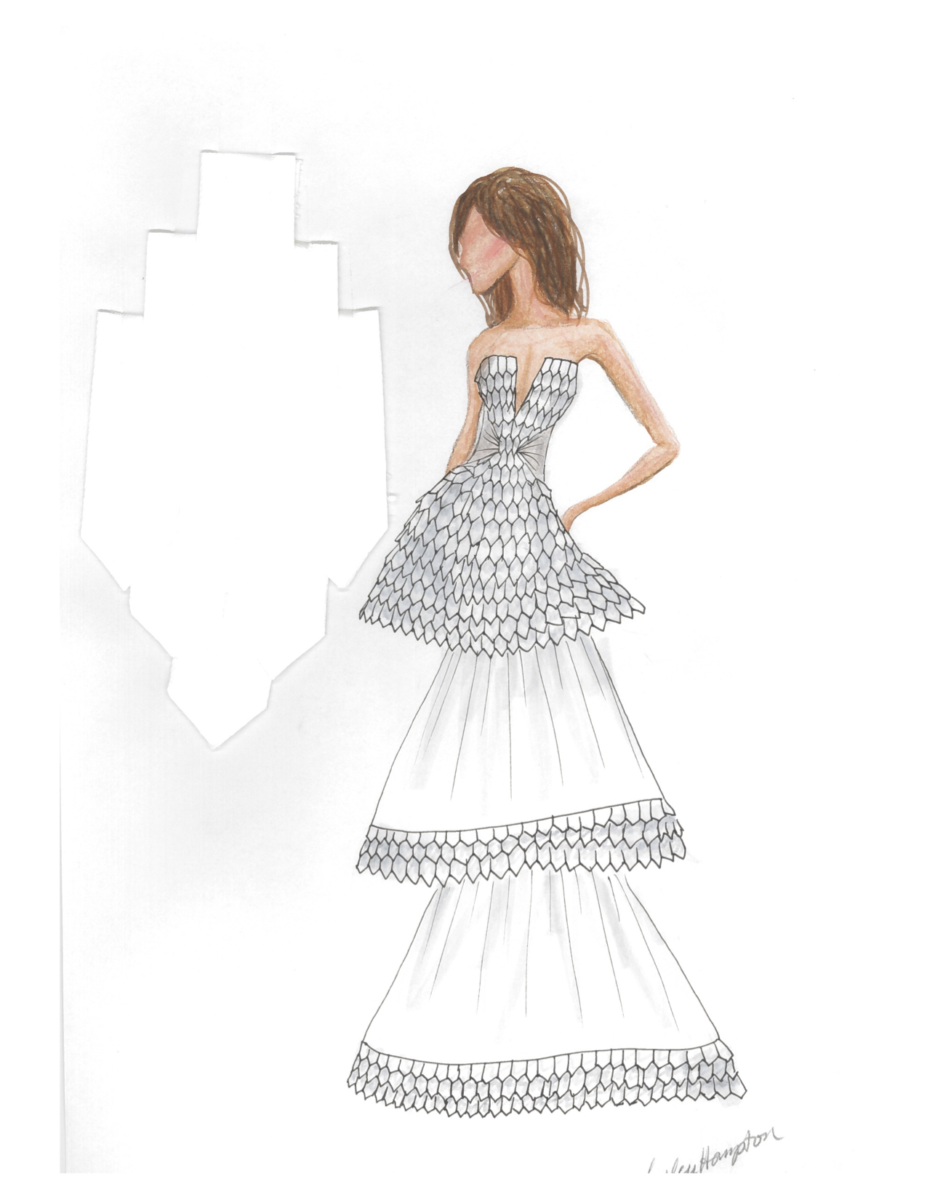George Brown fashion graduate seeks to add an Indigenous flair to the show
This September, top fashion students from all over the country will be invited to design a garment that could put their name next to A-list brands like Chanel.
White Cashmere Collection 2017 will be held at the Royal Ontario Museum, and aims to celebrate Canada’s 150th anniversary. At the event, sixteen student designers will compete to win $4,000 for their garment, which will be made out of Cashmere brand bathroom tissues.
Showing at the event is exactly where Lesley Hampton, a graduate of George Brown College’s (GBC) fashion techniques and design program, hopes to be this September.
Hampton, of the Temagami First Nation located northeast of Sudbury, Ontario, wants to add an Indigenous flair to the proceedings.
She designed an outfit inspired by a Native American jingle dress, to commemorate one of the darkest periods of the nation’s history: the treatment of Indigenous peoples in Canada.
“I’m bringing the other side of what happened 150 years ago, of how First Nations experienced it, instead of the rest of Canada,” said Hampton.
Hampton’s design, a strapless white gown, will have beadwork that tells a story of the beginning of a relationship between European settlers and Indigenous peoples.
“If anything, I hope to start a conversation and get people to talk about it,” said Hampton.

Lesley Hampton wants to bring some Indigenous flare to the competition. Photo provided by Lesley Hampton
For GBC fashion professor Cynthia Givens-Sanford, competitions like White Cashmere help designers have a competitive edge in the industry.
“Let’s face it, we have a lot of fashion schools in the area, and hundreds of grads coming out every year,” said Givens-Sanford. “I try to indicate to my students to stand out.”
Givens-Sanford encouraged her students “to be super creative, to dig deep and to let them do what they feel they want to do.”
She said that Hampton is very knowledgeable about fashion.
Hampton credited GBC’s fashion program with helping her to perfect skills in pattern graphing and size grading.
As a young designer, she realized early the importance of continuing to bring diversity to her runway shows.
“I’ve had amputees, trans, plus-size, and a woman with alopecia in my shows,” Hampton explained.
She hopes to see a fashion industry where it’s normal to have a diverse range of bodies on the runway. In the meantime, Hampton continues to encourage young women of all sizes to be confident and to want to flaunt it in her shows.
“I want to normalize more full-bodied women by designing an entire collection of bracket plus size,” she added.
Hampton looks to have her shows spark a movement in the industry that simply “isn’t changing fast enough,” while continuing to amplify a thin version of beauty.
“I had a dream of my designs being on a billboard and having it sell the image of being confident over being a size two,” she said.
Givens-Sanford also expressed her concern for fashion being one of the slowest sectors to make change.
“I thought the pendulum had swung, and that we would start to see more shapely women,” she said. “So to see these rather thin, boyish figures is really unfortunate.”
Thankfully, progress is happening, and Givens-Sanford recognized that in her students.
“A lot of the garments we design with our students are very androgynous,” she said. “This is a movement that offers a more generous fit that both men and women can wear.”


